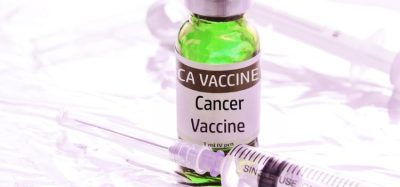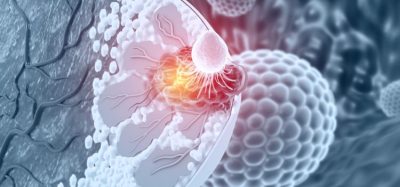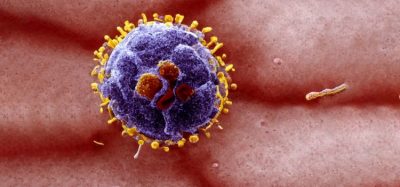Therapeutic gel shows promise against cancerous tumours
Posted: 22 February 2018 | Dr Zara Kassam (European Pharmaceutical Review) | No comments yet
Researchers have developed a biodegradable hydrogel scaffold system to release chemotherapeutic and immunotherapeutic drugs at the tumour site…
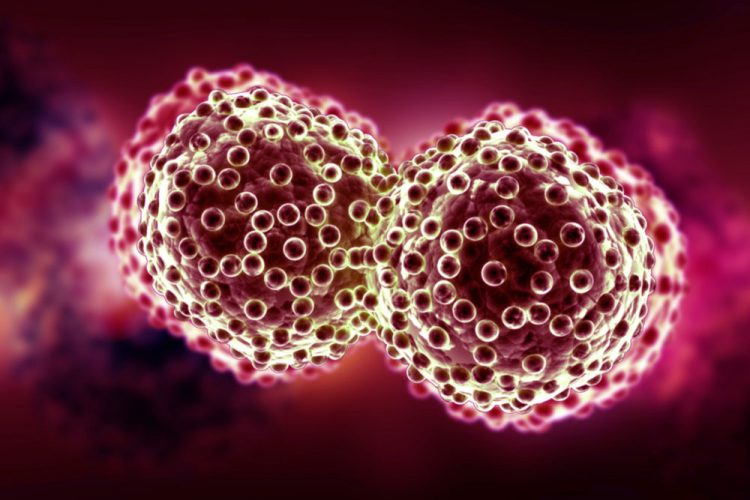

Scientists have created an injectable gel-like scaffold that can hold combination chemo-immunotherapeutic drugs and deliver them locally to tumours in a sequential manner. The results in animal models so far suggest this approach could one day ramp up therapeutic benefits for patients bearing tumours or after removal of the primary tumours.
The research focused on two specific types of melanoma and breast cancer, but this approach could work in other tissue types. Also, the research showed that this localised delivery of combination therapy significantly inhibited the recurrence of cancer after a primary tumour was surgically removed.
“We’ve created a simple method to use chemotherapy while leveraging the biology of the tumour and our natural defence against foreign invaders to beat back tumour development with limited side effects,” said senior author Dr Zhen Gu, Associate Professor in the joint UNC/NCSU Biomedical Engineering Department. “We have a lot more work to do in human clinical trials, but we think this approach holds great promise.”
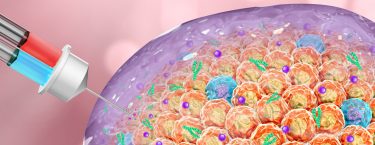

When injected into tumours, this therapy forms a gel to attack cancer cells.
In our bodies right now, there are normal cells mutating from their typical form and function. Thankfully, as our immune system lets normal cells move along and perform important biological functions, mutated cells are recognised and destroyed. Unfortunately, though, these cells can hijack the system designed to dispatch them. If that happens, these cancerous cells become virtually undetectable, free to multiply unabated, and able to form tumours.
Immunotherapy tries to reset our immune response to recognise these hijacker cancer cells. For example, immune checkpoint blockade (ICB) therapies target the cellular pathway that programs cell death; the therapies trigger the pathway so cancer cells are killed. This kind of therapy has shown incredible potential to treat various forms of cancer, such as melanoma, kidney cancer, head and neck cancer, bladder cancer, non-small cell lung cancer. But there can be troublesome side effects, including kick-starting the immune system to attack healthy tissue. And often this immunotherapy does not work because many tumours lack the specific characteristics needed in order for the immunotherapy to recognise and attack the cancer cells as enemies. These sorts of tumours are called low-immunogenic tumours.
With degradation of the gel, the ROS level in the tumour site can be reduced, which also helps inhibit tumour growth
Doctors have achieved better results with immunotherapy if they attack the tumours with chemotherapy first. But still, this approach is not sufficient for patients with low immunogenic tumours. Scientists, therefore, have been engineering various methods to make immunotherapy more effective. For example, scientists are utilising delivery systems to transport drugs and immunotherapy directly to the tumour site to enhance treatment efficacy and decrease toxicity in other parts of the body.
To this end, researchers at UNC and NC State developed what they call a bioresponsive scaffold system. Essentially, it’s a hydrogel – a polymeric network that can be loaded with therapeutics.
“The trick is that the gel can be formed quickly inside the body once a biocompatible polymer and its crosslinker are mixed together,” said co-lead author, Dr Jinqiang Wang, a postdoctoral researcher in the Gu lab. “We made sure that one of these agents can be cleaved apart by reactive oxygen species, or ROS – a natural chemical byproduct of cell metabolism.” In the context of cancer, a high level of ROS is a major player in tumour development and growth.
Researchers loaded the hydrogel scaffold with a chemotherapeutic gemcitabine and an immunotherapeutic agent – anti-PD-L1 blocking antibody. When injected into the tumour, the gel promotes the kinds of tumour characteristics that immunotherapies can identify. Then, in response to the highly abundant ROS in the tumour, the scaffold gradually breaks down, releasing gemcitabine first, and then anti-PD-L1.
“The cytotoxic chemotherapy can first kill some cancer cells and enhance the sensitivity of a tumour toward ICB therapy, which then stimulates the effectiveness of the ICB therapy,” said co-author Dr Gianpietro Dotti, Professor of Microbiology and Immunology at the UNC School of Medicine and member of the UNC Lineberger Comprehensive Cancer Center. “With degradation of the gel, the ROS level in the tumour site can be reduced, which also helps inhibit tumour growth.”
The UNC/NC State scientists tested this therapeutic gel-mediated approach against two cancers – B16F10 melanoma and 4T1 breast cancer, the latter being low immunogenic. The method was effective at making the tumour microenvironments susceptible to treatment. And when the payload was released, tumours decreased significantly. The researchers then conducted experiments to have the hydrogel scaffold form at the surgical site after removal of primary tumours. They witnessed a remarkable inhibition of cancer recurrence.
“Regarding the potential of this approach, scientists should further investigate the biocompatibility of using the gel scaffold for clinical benefit,” Gu said. “Meanwhile, we will optimise the dosages of combination drugs as well as treatment frequencies.”
The study has been published in Science Translational Medicine.
Related topics
Anti-Cancer Therapeutics, Immunotherapy, Single Use, Vaccines




